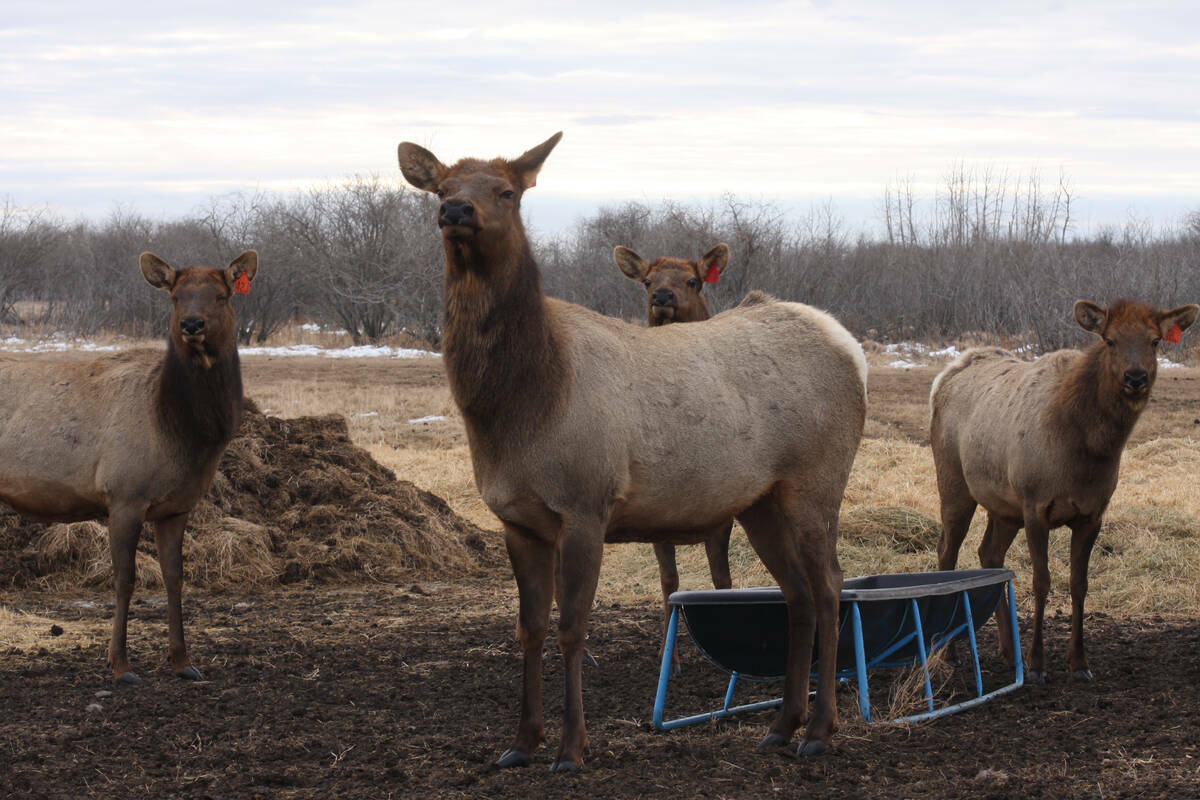The railways have their marching orders — double grain shipments in four weeks or face daily fines of up to $100,000. But what happens next?
Agriculture Minister Gerry Ritz says new federal legislation is coming, and farmers and grain companies are hoping it will do what the Fair Freight Service Act of 2012 didn’t — hold the railways accountable for poor service.
But the big test will be whether the railways pour more resources into grain shipping after years of cutting costs to boost the bottom line, said industry experts. For example, CP Rail has cut 4,550 employees, 11,000 cars and 400 locomotives, since 2012.
Read Also

Cervid harvest preserves to be developed in the province under Bill 10
The Government of Alberta has given approval for creation of cervid harvest preserves.
“We think the railways have captured so many efficiencies from the industry … (and) transferred that wealth to the shareholders of their companies, ” said Wade Sobkowich, executive director of the Western Grain Elevator Association. “They need to use some of that wealth to invest back for things like surge capacity.”
Lacombe producer Terry Young agrees fundamental changes are needed.
“This will be a short-term solution,” said Young, who faba beans, peas, canola, barley and wheat. “In the short term, I think it was necessary. There’s a lot of rhetoric out there. The railways are saying one thing and covering their bases and saying it’s delayed due to weather. And there’s some validity in that. But I think we need to put some pressure on the railways to see what can be done with the system we have in place.”
Grain shippers want the government’s new law to define “adequate and suitable” rail service and include fines when the railways fail to provide it, Sobkowich said.
In a competitive market, poor service results in lost business and reduced profits, said Greg Cherewyk, executive director of Pulse Canada. But in markets where competition is lacking, financial penalties are needed to ensure performance, he said.
Many critics of the railways note grain companies are penalized if they fail to load or unload cars within a specified time, but there have been no such penalties when railways fall behind.
In early March, there was a backlog of 61,000 undelivered grain cars and 43 grain ships waiting to be loaded at the West Coast. Western elevators were 90 per cent full.
Stiff fines
That situation brought Ritz and Transportation Minister Lisa Raitt to Winnipeg March 7 armed with an Order-in-Council giving CP and CN Rail four weeks to achieve weekly shipments of least 5,500 cars of grain per week — amounting to one million tonnes — or face the stiff daily fines. (The order is valid for 90 days but can be renewed.)
Ritz wasn’t buying the railways’ argument that a record 74-million-tonne crop last year and a cold winter were to blame.
“The railways have dropped the ball,” he said. “You’ve all heard of back-to work-legislation, this will be get-to-work legislation.”
And 11,000 grain cars a week is no more than what the railways have previously said they are capable of, he said. Going forward everything is on the table, Ritz added, including the cap on the total revenue the railways can collect for shipping grain.
“We want to make sure that everyone has the proper incentive to move the product at the end of the day,” he said.
The railways criticized Ottawa for imposing more regulation.
Moving 500,000 tonnes per week is at the upper limit of his company’s abilities, but achievable if the entire supply chain works together, said CN spokesman Jim Feeny. The extra grain volume that needs to move this year is similar to the total volumes of some other commodities that CN transports, he said.
“No supply chain in the world could handle that big an increase on such short notice as we received with this crop last fall,” Feeny said.
From the Manitoba Cooperator website: Manitoba moves to find space for ‘at risk’ grain
CP issued a similar statement.
“CP’s position remains that moving grain from the farm to the port is a complex pipeline involving many parties and requires all participants of the Canadian grain handling and transportation system to work together, which requires a 24/7 commitment similar to the railways,” said spokesman Ed Greenberg.
“To move tonnage is great, but how will that tonnage be broken out by corridor?” he asked.
Very little grain is moving into the U.S. When concerns were raised about of a possible shortage of Cheerios, the railways said oat exports could resume, but only to General Mills, a grain industry official said.
Poor service to any customer worries Young, who is also an Alberta Wheat Commission director. Higher yields are going to mean more frequent bumper crops and that requires a long-term fix, he said.
“The industry in general, you know, all the sectors have to get together and get this ironed out pronto,” he said.
“I’m not just talking about our raw product getting out. This is hampering our processed and finished product from getting out, too. We have to look at the whole value chain. Once we’ve got that sorted out for agriculture, than maybe we can connect with the other economies, like the energy sector and the forestry sector.
“It not only affects our sector. It affects the other sectors as well, as well as the economy of western Canada.”
But for now, the big question for most farmers is emptying bins and getting cash to both pay bills and buy inputs for this year’s crop.
Farmers should be calling more grain buyers than in past years in order find delivery opportunities, said Brenda Tjaden Lepp, chief market analyst with FarmLink Marketing Solutions.
“There has been a big shift from a seller’s market to a buyer’s market here,” she said.
Despite the generally wider basis on most crops, there have been some marketing opportunities, including one in late February when the canola basis narrowed and futures prices increased, she said.
















